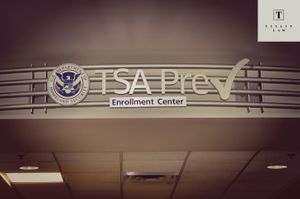Under best-value evaluation schemes, government evaluators are typically required to qualitatively assess the offerors’ proposals based on the stated evaluation criteria in the solicitation to determine which proposal represents the best value to the government. If the evaluation scheme provides that the procuring agency would evaluate the “extent” to which a proposal meets a particular requirement, offerors may reasonably expect that their proposal exceeding the government’s stated requirements would be evaluated more favorably than a competing proposal that meets the minimum requirements. In such best-value procurements, the agency must usually identify and assess potential discriminators between the offerors’ proposals in addition to evaluating whether the proposals are acceptable under the stated criteria in the RFP. Disappointed offerors may challenge a procuring agency’s best-value determination as flawed when one or more underlying evaluations upon which that tradeoff analysis is based are unreasonable.
In B-421871.3; B-421871.4, the Government Accountability Office (GAO) sustained a bid protest implicating these best-value evaluation principles in a Department of Homeland Security (DHS) procurement for financial and program management support services. The underlying task order (TO) was issued in support of the Countering Weapons of Mass Destruction (CWMD) Office under DHS’ Program Management Administrative, Operation and Technical Services II (PACTS II) indefinite-delivery, indefinite quantity (IDIQ) contract. The request for proposal (RFP) contemplated a time-and-materials (T&M) award to be issued on a best-value basis upon the consideration of four factors. The “technical capability and approach” was the most important non-price factor followed by “management approach” and “past performance” factors in decreasing order of importance. The non-price factors, when combined, were considered more important than the “price” factor. Furthermore, the RFP’s evaluation criteria outlined an adjectival confidence ratings framework for the evaluation of non-price factors, with “High Confidence” being the highest possible adjectival rating. The RFP also provided “positive” and “negative” evaluation elements that were assigned when an offeror’s proposal demonstrated an understanding (or lack thereof) of RFP requirements. Evaluators were also required to consider the soundness of the offerors’ proposed approaches to accomplish the relevant objectives.
Following the award decision, the protestor challenged the agency’s evaluation of the technical proposals as unreasonable. The protest alleged that the agency conducted a flawed best-value tradeoff analysis. In the post-award protest, the protestor alleged that the agency unreasonably assigned a “positive” to the awardee based on a misunderstanding of the awardee’s proposal. The protestor also claimed that the agency’s best-value analysis failed to recognize “positives” in the protestor’s staffing plan, which offered more senior accountants who were certified public accountants (CPAs). Finally, the incumbent-protestor alleged that the agency unreasonably ignored the clear benefits offered by its proposed transition plan. Due to these alleged errors in the underlying evaluations, the protestor challenged the agency’s overall best-value determination as flawed.
Unreasonable Assignment of “Positive” to the Awardee’s Proposal
Upon reviewing the agency’s evaluation of the awardee’s proposal, the protestor raised supplemental protest arguments that the agency misunderstood the awardee’s use of the audit command language (ACL) tool in its proposed solution. The agency assigned the awardee a “positive” for its proposed use of the ACL tool to support enterprise risk management activities. However, in its proposal, the awardee had actually proposed the ACL tool to facilitate enterprise resource management activities. The mix-up was attributable to enterprise risk management and enterprise resource management activities sharing the same acronym. Therefore, the protestor challenged the agency’s decision to assign a positive to the awardee for its proposed use of the ACL tool. The agency failed to address this supplemental protest argument substantively. Therefore, the GAO concluded that the agency effectively conceded that the protestor’s arguments were meritorious and that it was unreasonable for the agency to assign a “positive” to the awardee’s proposal for its use of the ACL tool.
Unrecognized “Positives” in the Protestor’s Staffing Plan
The protestor alleged that the agency’s best-value tradeoff analysis failed to consider that under the “management approach and staffing plan” factor, the protestor proposed two senior accountants who were CPAs when only one of the awardee’s proposed senior accountants was a CPA. Notably, the RFP had advised offerors that a CPA was “preferred” for these positions. However, when evaluating the staffing plans, the agency merely noted both the awardee’s and the protestor’s proposals as having “met the requirement” and assigned both proposals a “High Confidence” rating under the relevant factor.
In agreeing with the protestor, the GAO explained that the RFP’s evaluation criteria required a qualitative assessment of the proposed key employee’s education, qualifications, and experience. Additionally, the RFP clearly preferred senior accountants who were CPAs. However, the record contained no evidence of the source selection authority conducting such a qualitative assessment. Instead, the agency had substituted the qualitative assessment with a simple pass/fail determination that the awardee and the protestor both met the solicitation requirements. Therefore, the GAO found merit in the protestor’s argument that the agency’s best-value tradeoff analysis failed to consider whether its proposal should have been evaluated more favorably for proposing two CPAs for the senior accountant roles.
Unrecognized “Positives” in the Protestor’s Transition Plan
Finally, the protestor alleged that the agency’s best-value evaluation unreasonably ignored the clear benefits of its transition plan, in which the incumbent-protestor committed to having all its proposed staff ready to perform on day 1. In comparison, the awardee had only proposed to have its key personnel and transition team in place by day 30 and have the contract fully staffed by day 60. The agency’s evaluation report again merely indicated that both proposals “met the requirements” for the transition plan criteria and assigned both the protestor and the awardee a “High Confidence” rating in the technical capability and approach factor, which contained the transition plan. Therefore, the GAO also found merit in the protestor’s arguments that the procuring agency failed to qualitatively assess the offerors’ proposed transition plans.
When conducting best-value tradeoff evaluations, the procuring agency must look behind adjectival ratings and consider the substance of the proposals. Such an evaluation necessarily involves conducting a qualitative assessment of the underlying differences between competing proposals. Additionally, whenever a solicitation indicates that the source selection authority will evaluate the extent to which an offeror meets a requirement – exceeding the stated minimum requirements should typically result in a more favorable evaluation. Contractors should be aware that the government’s failure to assign a more favorable evaluation under such circumstances can be protested. Similarly, the source selection authority’s decision to evaluate a tradeoff factor as “pass or fail” can be protested as it effectively gives no weight to that factor in the tradeoff decision while simultaneously increasing the importance of the remaining factors. Therefore, the government’s failure to conduct a well-documented qualitative assessment in best-value tradeoff procurements may be protested by disappointed offerors, especially when the overall adjectival ratings do not reflect the underlying merits of their proposed solution.
This Bid Protests Insight provides a general summary of the applicable law in the practice area and does not constitute legal advice. Contractors wishing to learn more are encouraged to consult the TILLIT LAW PLLC Client Portal or Contact Us to determine how the law would apply in a specific situation.





